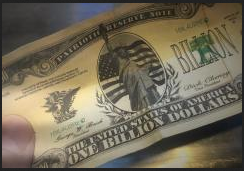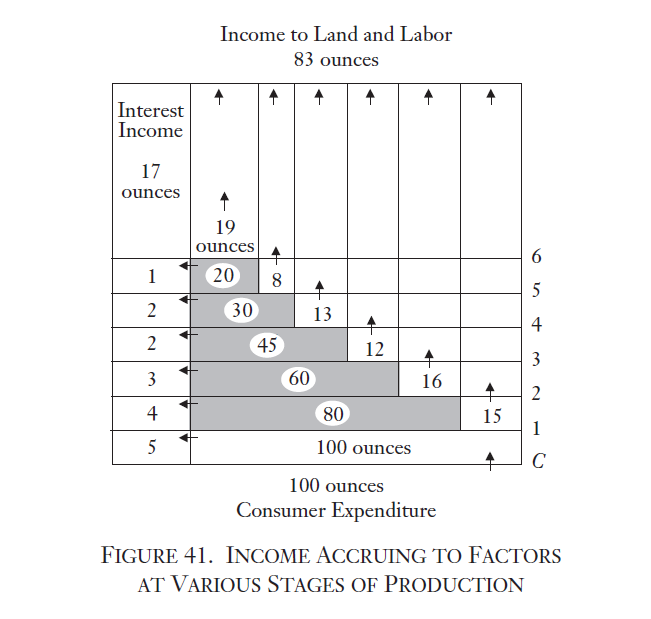I. Warning against Fiduciary Media Early in the 20th century, Ludwig von Mises warned against the consequences of granting the government control over the money supply. Such a regime inevitably creates money through bank credit that is not backed by real savings—a type of money that Mises termed “fiduciary media.” In 1912, Mises wrote, It would be a mistake to assume that the modern organization of exchange is bound to continue to exist. It carries within itself the germ of its own destruction; the development of the fiduciary medium must necessarily lead to its breakdown.1 Mises knew that breakdowns of economic activity were the inevitable outcome of government interference in the monetary sphere. However, public opinion has not correctly diagnosed the root
Topics:
Thorsten Polleit considers the following as important: 6b) Mises.org, Featured, newsletter
This could be interesting, too:
Eamonn Sheridan writes CHF traders note – Two Swiss National Bank speakers due Thursday, November 21
Charles Hugh Smith writes How Do We Fix the Collapse of Quality?
Marc Chandler writes Sterling and Gilts Pressed Lower by Firmer CPI
Michael Lebowitz writes Trump Tariffs Are Inflationary Claim The Experts
I. Warning against Fiduciary Media
Early in the 20th century, Ludwig von Mises warned against the consequences of granting the government control over the money supply. Such a regime inevitably creates money through bank credit that is not backed by real savings—a type of money that Mises termed “fiduciary media.”
In 1912, Mises wrote,
It would be a mistake to assume that the modern organization of exchange is bound to continue to exist. It carries within itself the germ of its own destruction; the development of the fiduciary medium must necessarily lead to its breakdown.1
Mises knew that breakdowns of economic activity were the inevitable outcome of government interference in the monetary sphere. However, public opinion has not correctly diagnosed the root cause, regularly blaming instead the free market system—rather than the government—for the malaise. In times of crisis, people call for more government intervention in all sorts of markets, thereby setting into motion a spiral of intervention which, over time, erodes the liberal economic and social order.
It is therefore a rather discomforting truth that today’s governments the world over produce fiduciary media, the very kind of money Mises had warned us against.
It is an inflationary regime. The relentless rise in the money stock necessarily reduces the purchasing power of money to below the level that would prevail had the money supply not been increased. Early receivers of the new money benefit at the expense of those receiving it later.
What is more, the creation of fiduciary media artificially suppresses market interest rates and thereby distorts the intertemporal allocation of scarce resources. It leads to malinvestment, which must eventually erupt in collapsing output and employment.
II. The Relentless Increase in Fiduciary Media
The worldwide financial and economic debacle bears testimony to Mises’s analysis of the harmful economic and political forces set into motion by a government-sponsored, fiduciary-media regime.
In an effort to fight the correction of the distortions caused by state-sponsored fiduciary media, governments, on the one hand, are running up huge amounts of public debt to finance their outlays—that is, they are engaging in deficit spending.
On the other hand, central banks have lowered official interest rates essentially to zero and have expanded the base money supply at unprecedented rates—this is to a large extent a reflection of central banks monetizing the commercial banks’ troubled assets.
Unprofitable banks will be restored back to health for the purpose of churning out even more new credit and money. This is widely seen as a necessary step to reverse the recession—in actuality the very process that corrects malinvestment—into a recovery.
Indeed, in order to prevent an inflation-induced boom from collapsing, it is never enough to keep credit and money stocks at current levels. Ever-greater doses of credit and money are needed.
The production structure, which has been formed by the relentless increase in credit and money at ever-lower interest rates, begins to unravel as soon as the injection of additional credit and money comes to an end.
Murray N. Rothbard described the disastrous effect set into motion by ever-greater levels of credit and money succinctly: “Like the repeated doping of a horse, the boom is kept on its way and ahead of its inevitable comeuppance, by repeated doses of the stimulant of bank credit.”2
Such a strategy has its limits, though:
It is only when bank credit expansion must finally stop…either because the banks are getting shaky or because the public is getting restive at the continuing inflation, that retribution finally catches up with the boom. As soon as credit expansion stops, the piper must be paid.3
III. Deflation Fears
In view of the strong rise in the monetary base, it might be surprising that some market observers keep expressing fears over deflation—that is, a decline in the money stock accompanied by its usual symptom: falling prices across the board.
If banks start reining in loans extended to private households, firms, and government entities, the economy’s credit and money stock will contract—and money would quickly be in short supply.
A decline in the money stock would not only force down consumer, producer, and asset prices; it would also entail bankruptcies of firms, private borrowers, and banks on a grand scale, as the latter would no longer succeed in rolling over their ever-higher debt levels.
In the United States and the euro area, for instance, the banking sector is about to deleverage and de-risk its balance sheet. If the banks shrink their balance sheets, the credit and money supply in the economy will decline.
Is something unfolding that bears a similarity to what happened in Japan, beginning at the end of the 1990s and continuing to around 2005, when the banks’ loan supply contracted? It is this very question that deserves close attention from those who want to get an idea of what may lie ahead for the West.
IV. Political Opposition to Deflation
Under a regime of government-controlled money, it is a political decision whether or not the money stock changes—that is, whether there will be ongoing inflation (a rise in the money stock) or deflation (a decline in the money stock).
Governments have a marked preference for increasing the money stock. It is a tool of government aggrandizement. Inflation allows the state to finance its own income, public deficits, and elections, encouraging a growing number of people to coalesce with state power.
A government holding a monopoly over the money supply has, de facto, unlimited power to change the money stock in any direction and at any time that is deemed politically desirable.
This can be done through various measures. The “normal way” is providing commercial banks with favorable credit conditions, allowing them to lend to private households, firms, and public sector entities—thereby issuing new money. If this doesn’t work, the government and central bank can pursue alternative routes:
First, the government can increase its deficit and oblige banks to monetize government debt. By increasing spending (for example, on unemployment benefits, infrastructure, etc.), the newly created money stock enters the pockets of the people.
Second, the central bank can start buying assets from banks and other firms (e.g., stocks, housing, etc.), thereby distributing new money through direct purchases.
Third, the government can nationalize banks, obliging them to keep extending credit to the private and public sector on “favorable terms.”
And fourth, the central bank can create Friedman helicopter money, and “somehow [distribute] it to the public as a transfer payment.”4
The government can prevent the economy’s money supply from contracting if a no-deflation policy is supported by public opinion. Mises was well aware of the ideologically and politically rooted inflation bias when he wrote: “The favor of the masses and of the writers and politicians eager for applause goes to inflation.”5
One can expect the inflation bias to be especially pronounced in times of emergency. Faced with falling production and rising unemployment—the unavoidable result of fiduciary media, of inflation itself—people may all too easily consider further inflation to be the lesser evil. Hence, inflation breeds even more inflation.
Mises noted that people
hold that although inflation may be a great evil, yet it is not the greatest evil, and that the State might under certain circumstances find itself in a position where it would do well to oppose greater evils with the lesser evil of inflation.6
Mises, however, refuted this “emergency” argument:
No emergency can justify a return to inflation. Inflation can provide neither the weapons a nation needs to defend its independence nor the capital goods required for any project. It does not cure unsatisfactory conditions. It merely helps the rulers whose policies brought about the catastrophe to exculpate themselves.7
Mises’s firm anti-inflation view—and his recommendation for a return to sound money (that is, free market money)—rested on his awareness of the disastrous consequences of an inflationary policy:
With regard to these endeavors we must emphasize three points. First: Inflationary or expansionist policy must result in overconsumption on the one hand and in mal-investment on the other. It thus squanders capital and impairs the future state of want-satisfaction. Second: The inflationary process does not remove the necessity of adjusting production and reallocating resources. It merely postpones it and thereby makes it more troublesome. Third: Inflation cannot be employed as a permanent policy because it must, when continued, finally result in a breakdown of the monetary system.8
[Originally published August 2009.]
- 1. Ludwig von Mises, The Theory of Money and Credit (New Haven, CT: Yale University Press, 1953), p. 409.
- 2. Murray N. Rothbard, For a New Liberty: The Libertarian Manifesto (Auburn, AL: Ludwig von Mises Institute, 2006), p. 237.
- 3. Ibid.
- 4. Karen Johnson, David Small, Ralph Tryon, “Monetary Policy and Price Stability,” International Finance Discussion Papers No. 641, Board of Governors of the Federal Reserve System, July 1999.
- 5. Ludwig von Mises, Human Action: A Treatise on Economics, 4th ed. (San Francisco, CA: Fox and Wilkes, 1996), p. 432.
- 6. Ludwig von Mises, The Theory of Money and Credit (New Haven, CT: Yale University Press, 1953), p. 221.
- 7. Ibid., p. 438.
- 8. Mises, Human Action, p. 432.
Tags: Featured,newsletter









